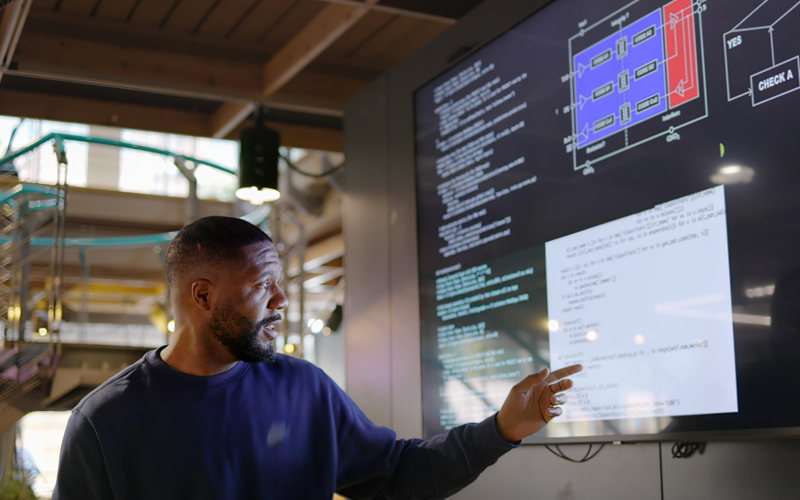The insurance sector is on a profound transformation journey, enabled by insurtech – a fusion of insurance and technology. Insurance tech is reshaping the insurance landscape beyond what was previously thought impossible. Its advent is disrupting an industry that has always been traditional, with success stories like that of Lemonade, Inc. An insurance provider in the US and Europe, Lemonade experienced a steady growth in revenue, improvement in gross margin and an increase in customer base. So what makes them different? They exclusively use chatbots for customer service and claims processing. And what message does their success story convey to the insurance industry? Let’s explore a bit.
The winds of change
According to a recent Gartner report titled Top Trends in Insurtechs for 2025, the top three insurance tech trends are: new entrants breaking the old model, digitally enabled CX becoming a success factor and threats stabilising over time. The report also mentions that their recent CIO survey found 58 per cent of insurance respondents reporting an increase in digital innovation funding through 2025 due to the impact of the pandemic. The insights from an NTT Data report titled Insurtech Global Outlook 2024 reinforce these Gartner predictions. The report talks about novel disruptions in CX, claims processing and more, being powered by digital technologies, shifting focus on profitability, the role of insurtech as an enabler in the ecosystem and how Generative AI could be a catalyst in all of these.
The message is clear. Sustenance in the insurance industry depends on digital transformation and its adoption. What are the various ways insurtech is changing the industry? Let’s take a look.
Crafting superior Customer eXperience (CX)
One of the major plus points driving insurtech adoption is enhanced customer experiences across the process. Traditionally, the industry relied on agents and call centres to interact with customers. Insurtech changed it all, across all touchpoints. Here is how.
Insurers are now interacting directly with customers through digital platforms, mobile apps and AI chatbots. This digitised approach has given access to vast amounts of customer data that can drive personalisation, which has become the norm across many industries. What does this mean for insurers? They can profile customers, study behaviour patterns and claims history, and identify trends, patterns and correlations to create innovative and personalised products and services. For example, they can now offer flexible, short-term or transferrable coverage, while meeting the specific needs of individuals.
Customers gain through 24/7 accessibility for quotes, assistance and claims, enhancing customer delight. Also, digital onboarding streamlines the complete process by simplifying policy enrollments through minimal paperwork. The digital platforms also accelerate claims processing, augmenting customer satisfaction and credibility. These insurtech-led changes drive great customer experiences, a key factor driving loyalty and revenue across all industries.
Enhancing operational efficiency
Digitisation has enabled insurers to drive scale and infuse flexibility across all their operations, including backend processes. Automation has reduced administrative costs and streamlined and accelerated processes. Data analytics powered by cutting-edge technologies like AI and ML are transforming various aspects of the industry. Policy underwriting, one of the most crucial insurance functions, can now be done with more precision. It is possible because of better risk profiling backed by data analytics, predictive analytics, etc. Insurers now have access to real-time data that has helped elevate risk management to a different level. For example, for farm insurance, they can study crop cycles, risks of droughts, floods, etc. Also, insurers can now combat fraudulent claims more effectively through fraudulent pattern identification with the help of data analytics.
Enabling better responses to compliance
The insurance sector has always had a complex regulatory landscape that keeps evolving. This aspect has been one of the reasons insurers held back on adopting digitisation. However, this challenge is being addressed with the new crop of disruptive insurtech companies. Insurtech is helping insurers adopt digitisation more effectively by ensuring compliance with regulatory standards through smart features and advanced technologies like blockchain. Automated contracts and regulatory reporting help insurers minimise operational risks. The industry is now able to respond better to changing regulatory requirements.
Disruption of traditional insurance business models
One of the most significant impacts of insurtech on the industry is the disruption of traditional business models because of the emergence of insurtech startups challenging the incumbents. This scenario has led to innovative thinking that enables sustenance and the creation of an ecosystem of collaboration. Traditional insurers are tying up with insurtech firms, healthcare providers, automakers and financial institutions to stay ahead of the curve in this fiercely competitive market.
These collaborations enable insurers to address the needs of digital-savvy customers by breaching the last-mile challenges through disruptive solutions. Insurtech represents a paradigm shift in the insurance landscape, offering a blend of customer-centricity, operational efficiency and industry disruption, leading to further proliferation and penetration, ushering in an era of insurance innovation. The future of insurtech seems bright and holds immense potential to challenge the status quo in the otherwise traditional sector.
How can Infosys BPM help?
Infosys BPM’s insurance outsourcing services follow a collaborative approach that focuses on cost reduction and propels a transformative journey for insurers. Our robust insurance practice helps insurers align their business processes to meet and exceed market demands, customer expectations and the evolving needs of intermediaries.








